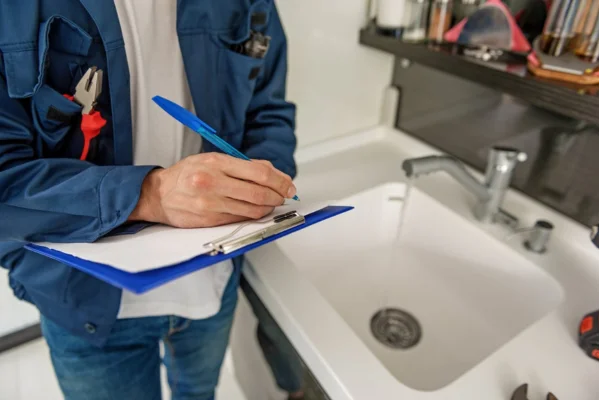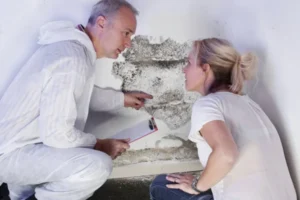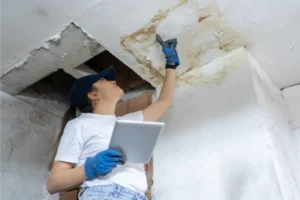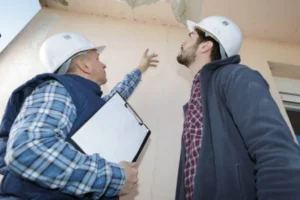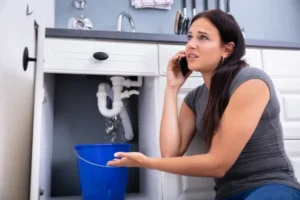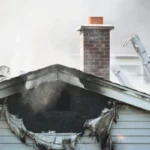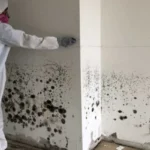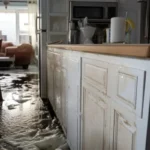Homeownership can be rewarding, but it comes with responsibilities—especially when it comes to protecting your property from water damage. Even a small leak or unnoticed moisture can escalate quickly, leading to costly repairs and potential health hazards.
Understanding what happens during a water damage inspection can ease concerns and help you take informed steps to protect your home. Professionals thoroughly assess your property, looking for hidden leaks, mold, and structural issues.
Our experts provide thorough flood damage inspection and water damage assessment to protect your property. With advanced water damage detection tools, we deliver accurate results fast. Count on local water damage inspection and reliable local water inspection and remediation services to restore your home. Inspection for water damage made simple.
Let’s explore what happens during this essential evaluation and how it affects your home’s restoration.
Why a Water Damage Inspection is Important
A professional inspection is critical for identifying potential problems before they escalate. Early detection prevents mold growth, structural deterioration, and other complications that compromise your home’s safety and value. Additionally, understanding your insurance coverage ensures you’re prepared if water-related damage occurs.
Identifying Hidden Damage Early
Water damage often lurks beneath the surface. A thorough water damage assessment can reveal hidden leaks, damp spots, and structural weaknesses that aren’t immediately visible. Addressing these issues early helps prevent more extensive repairs and costly complications down the line.
Preventing Mold and Structural Issues
Neglecting water damage can jeopardize both your property and health. Timely inspections help prevent:
- Mold growth that affects indoor air quality.
- Structural damage that could require expensive repairs.
- Health risks associated with prolonged exposure to moisture.
Understanding Insurance Requirements
Knowing your insurance coverage is fundamental. Many policies cover flood damage inspection, water mitigation, and repairs, but limits and exclusions vary. Understanding your policy ensures you can act quickly and effectively when water issues arise.
Preparing for a Water Damage Inspection
Before the inspection, gather records and note any visible water damage. Ensure clear access to affected areas so the inspector can conduct a thorough and accurate evaluation. Proper preparation ensures your inspection is successful and efficient.
Gathering Maintenance Records
Maintenance records provide crucial insights into your property’s history and help inspectors identify recurring issues. These might include:
- Previous water damage repairs.
- Plumbing maintenance schedules.
- Relevant insurance claims.
Noting Visible Signs of Water Damage
Once you’ve compiled maintenance records, it’s time to document any visible signs of moisture, such as:
- Discoloration or stains on walls and ceilings.
- Peeling paint or warped surfaces.
- Musty odors indicating mold.
- Buckled or uneven flooring.
Preparing the Property for the Inspector
Preparing your property for an inspection is recommended to confirm that the process goes smoothly and efficiently. Clear areas around potential problem spots, remove obstacles, and ensure easy access to crawl spaces, basements, and utilities. This allows for a thorough evaluation.
What Professionals Look For During an Inspection
Need a flood damage inspection? We specialize in water damage assessment and early water damage detection to stop problems before they spread. Our local water damage inspection team offers dependable inspection for water damage and complete local water inspection and remediation services for homes and businesses in your area.
Experts conduct a thorough assessment to uncover hidden water damage, checking walls, floors, ceilings, crawlspaces, and plumbing for moisture, leaks, or mold. Their detailed inspection ensures issues are detected early, helping protect your home and investment.
Signs of Moisture in Walls and Floors
Identifying signs of moisture in walls and floors is essential for maintaining a healthy home environment. Look for these indicators:
- Discoloration: Stains or patches on walls and floors signal potential leaks.
- Peeling Paint: Bubbling or flaking paint often indicates trapped moisture.
- Warping: Swelling or warping of flooring suggests extensive water exposure.
Checking Basements and Crawlspaces
Moisture issues regularly extend beyond walls and floors, making basements and crawlspaces prime areas for inspection. Professionals will look for signs of:
- Mold or mildew growth.
- Dampness and musty odors.
- Ventilation and insulation conditions.
Identifying Leaks and Sources of Water Entry
How can you pinpoint leaks and sources of water entry effectively? Start by inspecting critical areas where water typically penetrates. Look for:
- Stains or discoloration on walls and ceilings.
- Mold growth or musty odors.
- Damaged caulking or weather stripping around windows and doors.
Evaluating HVAC and Plumbing Systems
Water can infiltrate through HVAC units, pipes, or drainage systems. Inspectors check for leaks, moisture buildup, and other warning signs to prevent future damage.
Spotting Mold or Mildew
What signs should you look for to identify mold or mildew during an inspection?:
- Discoloration: Look for dark or greenish stains on walls and ceilings.
- Musty Odor: A persistent, earthy smell often points to hidden growth.
- Dampness: Check for wet spots or excessive humidity in the area.
Tools and Techniques Used in Water Damage Inspections
You will use several crucial instruments and methods when checking for water damage:
Moisture Meters
Although you might not see it, moisture lurks in hidden corners of your property. These devices help you accurately measure moisture content and pinpoint problem areas.
Thermal Imaging Cameras
While moisture meters provide invaluable insights into dampness levels, thermal imaging cameras take damage inspections to the next level by revealing temperature variations that indicate hidden moisture.
Humidity Sensors
Humidity sensors are essential instruments in damage inspections, providing real-time data on moisture levels in the air and materials. These sensors help you accurately assess the extent of damage and guide remediation efforts.
Visual Inspections
When conducting a water damage inspection, visual inspections can identify visible signs of moisture and damage. Look for notable discoloration, warping, or peeling paint on walls and ceilings.
Understanding the Inspection Report
Protect your property with professional flood damage inspection and precise water damage assessment. Our team uses trusted water damage detection methods to ensure nothing is missed. Rely on local water damage inspection services, expert inspection for water damage, and full local water inspection and remediation to safeguard your investment.
The inspection report provides detailed findings, including damage severity, repair estimates, and insurance documentation support.
How Damage Severity is Rated
Damage is typically classified into three categories:
- Class 1: Minimal moisture, little to no damage.
- Class 2: Significant moisture affecting materials and belongings.
- Class 3: Extensive damage, saturation of multiple materials.
Recommended Next Steps
Reports outline which areas require immediate attention, specialized treatment, and preventive measures. Following these recommendations ensures effective restoration and minimizes future issues.
Cost Estimates for Repairs
Reports include estimates for materials, labor, and the scope of repairs, helping homeowners like you plan budgets and prioritize work.
Insurance Documentation Support
The report serves as proof for insurance claims, showing the extent of damage and recommended repairs, making the coverage process smoother.
When to Call a Professional
When dealing with urgent water damage issues, quick action matters. Our flood damage inspection and water damage assessment services identify issues fast. With advanced water damage detection, local water damage inspection, and trusted inspection for water damage, we provide solutions. Depend on local water inspection and remediation to restore your property’s safety and comfort.
If you notice serious or hidden damage, professional assistance is recommended in the following situations:
Extensive or Hidden Damage
If mold, warping, or unexplained water issues are present in any area of your home, a professional can identify and remediate hidden problems effectively. Early water damage detection by professionals can prevent this degree of damage.
Persistent Moisture or Leaks
Even small, ongoing leaks can cause severe structural issues. Experts detect and fix problems promptly, preventing further damage. The longer you delay, the worse the costs may become.
Insurance Claims Assistance
It can be challenging to handle insurance claims following water damage. Experts accurately record damage and interact with adjusters on your behalf so you don’t have to worry about it.
Post-Flood or Storm Situations
After a flood or severe storm, you might be tempted to tackle the water damage on your own, but calling a professional is often the best course of action. They have specialized equipment and knowledge to guarantee proper mitigation, safeguarding your home and health while saving you time and effort.
Final Thoughts- Water Damage Inspection
An inspection is a vital step in protecting your home. From preparing for the assessment to understanding what professionals look for and interpreting the report, these inspections provide crucial insights. Acting promptly can prevent mold, structural damage, and costly repairs. Early intervention is key to keeping your property safe, healthy, and secure for years to come.
Don’t Wait Until It’s Too Late – Get Your Water Damage Inspection and Protect Your Property Now!
Frequently Asked Questions
1. How long does a water damage inspection take?
2. Will my insurance cover the inspection?
3. Can I conduct my own water damage inspection?
4. What happens if mold is found?
5. Are there certifications for water damage inspectors?
6. How do I know when to call a professional?

